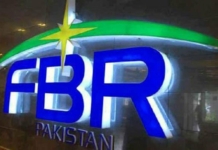Not enough dollars have been creating macroeconomic vulnerabilities for the economy of Pakistan that requires injection of dollars for meeting ends.
Economists have been urging the government to request the IMF for Rapid Financing Instrument (RFI) or Natural Calamity Response related funding facility, however, no such request has been made yet by the government.
Severe damages from floods especially in Sindh’s agricultural areas would force the country to import additional vegetables and cotton. According to media reports, only cotton of around $2 billion would be required during the current fiscal year.
The rupee nose-diving against the dollar along with immense pressure on the exchange rate and imports again on the rise with not enough dollars have been causing pressure on Pakistan’s economy.
The catastrophic floods in the country with initially estimated losses accumulating to the range of $18 billion have worsened the financial condition even more.
Along with more than one-third of the country being under water fears of zero or sliding to negative agricultural growth would further affect the economy of Pakistan.
Standing water on agricultural land would require quick dewatering to avoid the potential threat of less production in the range of three to five tons.
Even though the International Monetary Fund (IMF) programme has resumed after a seven-month break, Pakistan continues to struggle with a significant dollar liquidity shortage as the catastrophic floods have worsened the macroeconomic indicators.
The IMF program that was stalled during the previous Pakistan Tehreek-e-Insaf (PTI) government because of giving unfunded subsidies on fuel and electricity was restored in August when a loan tranche of $1.17 billion was approved for Pakistan under the combined seventh and eighth reviews.







